Pecan Planting Guide: Tips On Growing And Caring For Pecan Trees
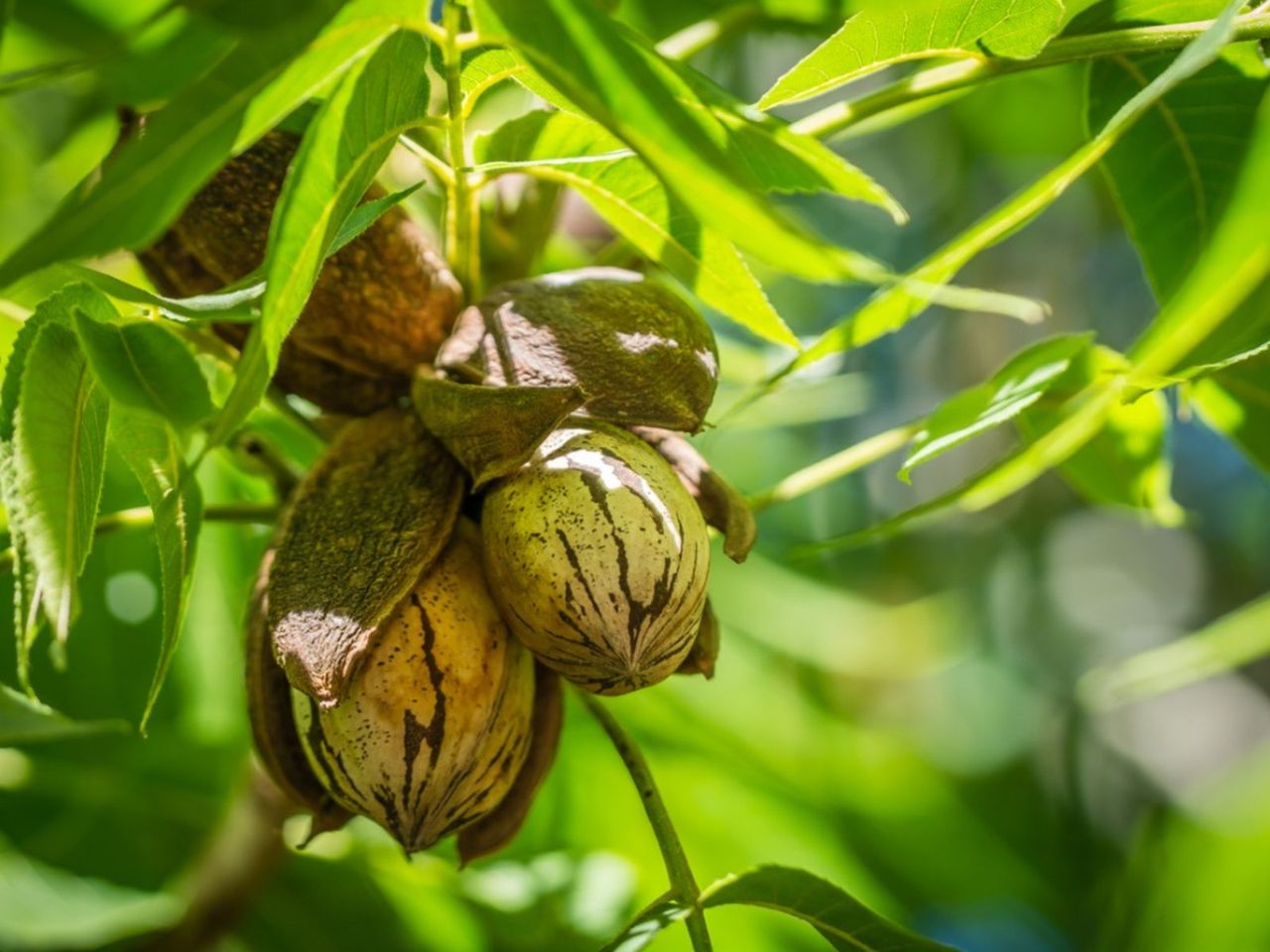

Pecan trees are native to the United States, where they thrive in southern locations with long growing seasons. Just one tree will produce plenty of nuts for a large family and provide deep shade that will make hot, southern summers a little more bearable. However, growing pecan trees in small yards isn't practical because the trees are large and there are no dwarf varieties. A mature pecan tree stands about 150 feet (45.5 m.) tall with a spreading canopy.
Pecan Planting Guide: Location and Preparation
Plant the tree in a location with soil that drains freely to a depth of 5 feet (1.5 m.). Growing pecan trees have a long taproot that is susceptible to disease if the soil is soggy. Hilltops are ideal. Space the trees 60 to 80 feet (18.5-24.5 m.) apart and well away from structures and power lines. Pruning the tree and the roots before planting will encourage strong growth and make pecan tree care much easier. Cut off the top one-third to one-half of the tree and all of the side branches to allow strong roots to develop before they have to support top growth. Don't allow side branches any lower than 5 feet (1.5 m.) from the ground. This makes it easier to maintain the lawn or groundcover under the tree and prevents low-hanging branches from becoming obstructions. Bare root trees that feel dry and brittle should be soaked in a bucket of water for several hours before planting. The taproot of a container grown pecan tree needs special attention before planting. The long taproot usually grows in a circle around the bottom of the pot and should be straightened before the tree is planted. If this isn't possible, cut off the lower part of the taproot. Remove all damaged and broken roots.
How to Plant a Pecan Tree
Plant pecan trees in a hole about 3 feet (1 m.) deep and 2 feet (0.5 m.) wide. Position the tree in the hole so that the soil line on the tree is even with the surrounding soil, then adjust the depth of the hole, if necessary. Begin filling the hole with soil, arranging the roots in a natural position as you go. Don't add soil amendments or fertilizer to the fill dirt. When the hole is half full, fill it with water to remove air pockets and settle the soil. After the water drains through, fill the hole with soil. Press the soil down with your foot and then water deeply. Add more soil if a depression forms after watering.
Caring for Pecan Trees
Regular watering is essential for young, newly planted trees. Water weekly in the absence of rain for the first two or three years after planting. Apply the water slowly and deeply, allowing the soil to absorb as much as possible. Stop when the water begins to run off. For mature trees, soil moisture determines the number, size, and fullness of the nuts as well as the amount of new growth. Water often enough to keep the soil evenly moist from the time the buds begin to swell until harvest. Cover the root zone with 2 to 4 inches (5-10 cm.) of mulch to slow water evaporation. In spring of the year after the tree was planted, spread a pound (0.5 kg.) of 5-10-15 fertilizer over a 25 square foot (2.5 sq. m.) area around the tree, beginning 1 foot (0.5 m.) from the trunk. The second and third year after planting, use 10-10-10 fertilizer in the same manner in late winter or early spring, and again in late spring. When the tree begins to bear nuts, use 4 pounds (2 kg.) of 10-10-10 fertilizer for each inch (2.5 cm.) of trunk diameter. Zinc is important for pecan tree development and nut production. Use a pound (0.5 kg.) of zinc sulfate each year for young trees and three pounds (1.5 kg.) for nut-bearing trees.
Gardening tips, videos, info and more delivered right to your inbox!
Sign up for the Gardening Know How newsletter today and receive a free copy of our e-book "How to Grow Delicious Tomatoes".

Jackie Carroll has written over 500 articles for Gardening Know How on a wide range of topics.
-
 Best Tomatoes For Containers: 10 Tastiest Varieties For Plentiful Produce In Compact Areas
Best Tomatoes For Containers: 10 Tastiest Varieties For Plentiful Produce In Compact AreasThese are the best tomatoes for containers that prove you don't need to have a large space or elaborate garden to grow delicious produce.
By Bonnie L. Grant
-
 Ultimate Potted Flowers For Spring: 8 Brilliant Blooming Options for Spring Containers
Ultimate Potted Flowers For Spring: 8 Brilliant Blooming Options for Spring ContainersCelebrate the most uplifting of seasons with the most dazzling container flowers imaginable. Here, we present some of the loveliest potted flowers for spring…
By Tonya Barnett
-
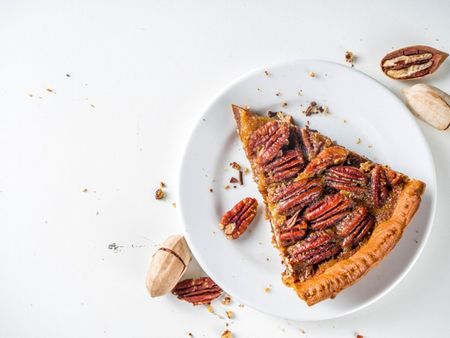 From Harvest To Table: How To Make The Perfect Pecan Pie
From Harvest To Table: How To Make The Perfect Pecan PieFall is pecan harvest time, which means it’s also time for the perfect pecan pie recipe. Read on for more.
By Amy Grant
-
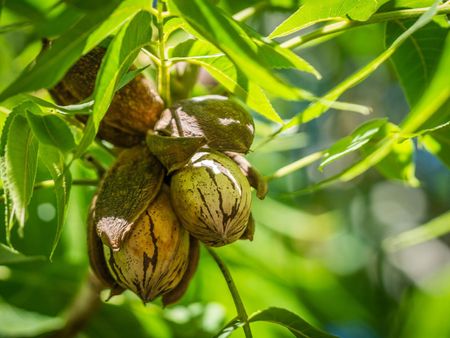 Root Pecan Cuttings – Can You Grow Pecans From Cuttings
Root Pecan Cuttings – Can You Grow Pecans From CuttingsPecans are delicious, so much so that if you have a mature tree, your neighbors are likely envious. You may want to root pecan cuttings in order to grow a few trees for gifting. Will pecans grow from cuttings though? Click here for info on pecan cutting propagation.
By Teo Spengler
-
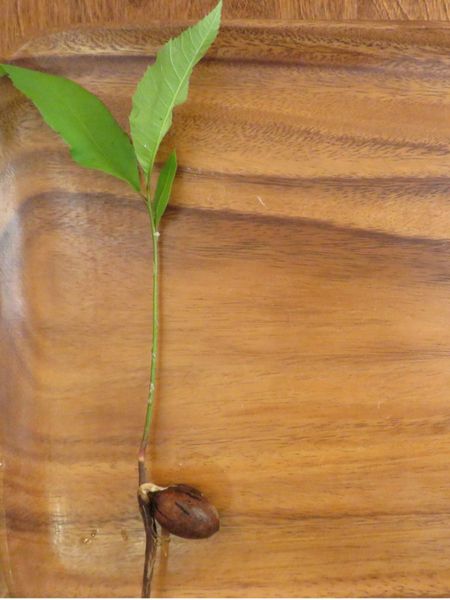 How To Plant Pecans: Learn About Sowing Pecan Seeds
How To Plant Pecans: Learn About Sowing Pecan SeedsGrowing pecans from seed is not as simple as it sounds. Sowing pecan seeds is only one step in a complex process of growing a nut producing tree. Can you plant a pecan seed? Click here to find out and get tips on how to plant pecans and pecan seed germination.
By Teo Spengler
-
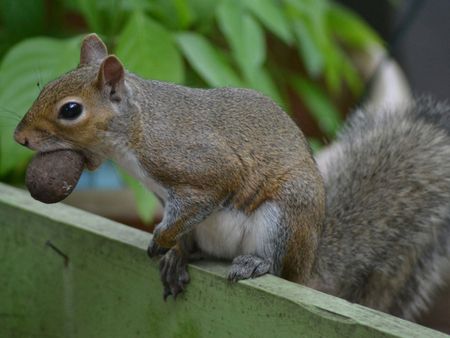 Help, Pecans Are Gone: What’s Eating My Pecans Off The Tree
Help, Pecans Are Gone: What’s Eating My Pecans Off The TreeIt’s definitely unpleasant to walk outside to admire your pecan tree and find half your nuts are gone! You may begin to wonder what could be eating your pecans. Click this article for ideas on different pests that eat pecans so you can save more of the tasty nuts for yourself.
By Teo Spengler
-
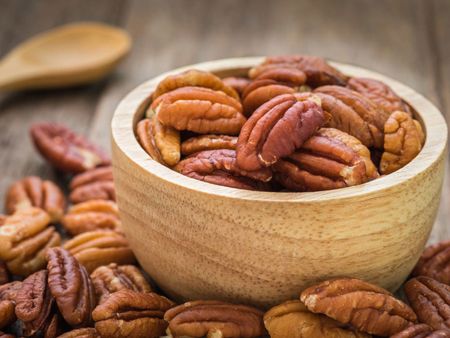 Using Pecans In The Kitchen: What To Do With Pecans
Using Pecans In The Kitchen: What To Do With PecansWith such a large quantity of nut production, one might wonder what to do with pecans. Cooking with pecans is the most common of uses, but there are other ways of using pecans. If you are lucky enough to have access to a pecan tree, learn how to use pecans here.
By Amy Grant
-
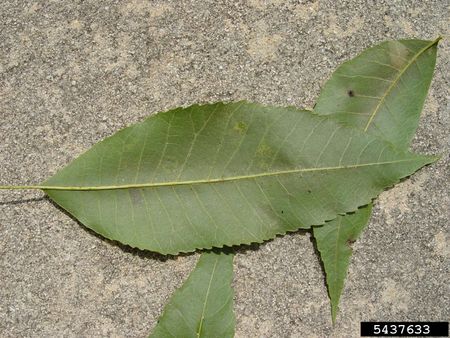 Pecan Bacterial Leaf Scorch: Treating Bacterial Leaf Scorch Of Pecans
Pecan Bacterial Leaf Scorch: Treating Bacterial Leaf Scorch Of PecansWhile pecan bacterial leaf scorch (PBLS) does not kill pecan trees, it can result in significant losses. The following article discusses the symptoms and treatment for a pecan tree with bacterial leaf scorch. Click here for more information.
By Amy Grant
-
Pecan Downy Spot Control – How To Treat Downy Spot Of Pecans
Downy spot of pecans is a fungal disease affects the overall vigor of the tree, thus pecan downy spot control is integral to its health. The following article contains information on pecan downy spot symptoms and tips for treating a pecan tree with downy spot.
By Amy Grant
-
Pecan Vein Spot Control – Learn About Pecan Vein Spot Disease
Pecan vein spot disease is caused by the fungus Gnomonia nerviseda. The disease does not appear on shoots or nuts, only foliage and only in pecan trees. The good news is that the disease is infrequent, causes little crop loss and can be prevented. This article will help.
By Bonnie L. Grant